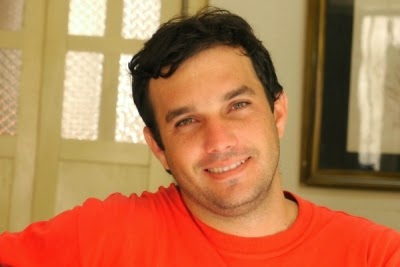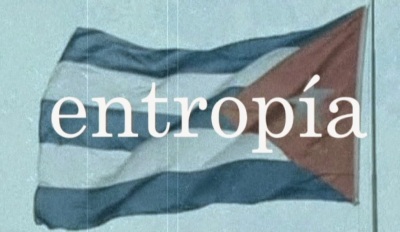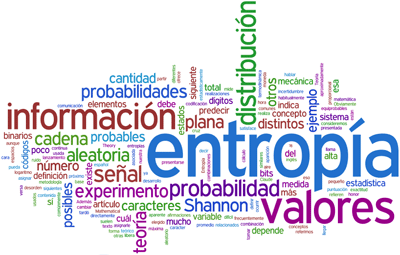THE COPY-PASTE OF REVOLUTIOPHRENIA
Orlando Luis Pardo Lazo
Before Facebook, I met Eliécer Jiménez only once, in an alternative cultural debate in Camagüey, three years ago. He was somewhat shy, but resolute in his urge to be creative in cinematographic terms. No money, no contacts, no political pedigree. A dreamer in a province that looked so asleep. Hope in Cuba today usually depends precisely on awakening in the middle of hopelessness.
We were in the house of Henry Constantín, a common friend and social activist that holds the record of being expelled from different Cuban universities three times, from Santiago de Cuba to La Habana, as despotism is quite equitable throughout the Island. Those public meetings in private are still being held there, with the name of Hora Cero / Zero Hour, a concept that connects with the notion of starting from zero in a society so afraid of citizen initiatives. Zero Hour is in fact an independent space with a lot of communicating vessels with my literary generation called Year Zero, of which I have recently compiled a narrative anthology translated into English by O/R Books in New York.
During some time I confess that I forgot completely about Eliécer Jiménez. His first films, short and sharp, reached me before I had the chance to remember that he was the same brilliant young man of the autumn of 2011, coincidentally around this date.
I still do not know whether I liked or not his bold visual improvisations. “Free cinema” (or maybe freak cinema, just one minute of a version of our own wall of wails); “Usufruct” (about the limitations in the once solvent Camagüey of the reforms imposed by Raul Castro, also known as Raulforms), “Ice Age” (a naturalistic estrangement filmed inside a domestic freezer), “The face of water” (reflecting on the reflections caused by waste waters running or stagnated on the asphalt), “Wet feet, dry feet” (another documented-in-detail minute focused on floors and social inertia), “Ideological deviation” (a close-up to a rather erotic pair of lips chewing a most likely American gum), “Verdadero Beach, the people’s beach” (not the touristic Varadero but “verdadero”, which means “the real thing” and immediately remits to “vertedero”, that is: a rubbish dump where pigs and humans share a happy bath in the Caribbean), and, of course, the climactic confusion that we are going to sufferenjoy today, Entropy, where the script-writer and director and editor, all in one in the conception of Eliécer Jiménez, decide not to film at all, but to bring provocatively together one hour of fragmentary light and sound from our audiovisual memory, in a virtual cut-up or unpredictable patching of pixels and collage of clicks, among other anachronistic notions in a nation without internet.
Eliécer Jiménez has an underground personal producer that is identified as Ikaik, with two uncommon K’s, in a Kafkaesque allegory to ICAIC, with two Cuban C’s, and this could perfectly be the only one producer in the planet without other budget than his own pockets full of illusion. Nevertheless, many of his documentaries have obtained national awards, like those granted by the Cine Plaza in Havana, by the Sur Imagen film festival in Cienfuegos, by SIGNIS the World Catholic Association for Communication, by the extinct Poor Cinema Festival in Gibara (province of Holguín), and by the quasi-extinct International of School of Cinema and TV in San Antonio de los Baños (Havana province), gone with García-Márquez as one of the tokens of the Castrozoic Era.
Graduated from that school, but much in the style of the Renaissance film-maker named Miguel Coyula (the director of Memories of Overdevelopment, which will join us on November 12th to present his -in my opinion- masterpiece), Eliécer Jiménez is what we call in Cuba “un hombre orquesta” or a do-it-all-by-yourself. The alternative that has frustrated many of my colleagues would be: do-nothing. But luckily Eliécer Jiménez refused to see no entropy, hear no entropy, speak no entropy. And today we will pay the consequences.
His esthetics establishes an obvious dialogue with another Cuban documentary by Armando Capó Ramos entitled “The Revolution is…”. Although we must recognize that, in general terms, younger generations in Cuba are fascinated by a past that it was sacred to their predecessors in art (usually their censors at the same time), but that for them now it’s only useful as raw material for deconstruction (including destruction) and to expose a history that began epical to end up ridiculous. It really seems that no one knows the past that waits for us.
Eliécer Jiménez worked for several boring Cuban radio and TV stations. He published in several not so boring intellectual magazines, like Cuban Cinema. And he is member of some obsolete cultural organizations, like the Saíz Brothers Association and the Cuban Audiovisual Association. All of them are not only State-run, but dependent of the Communist Party, the only one legal in the Island of Liberty. He was tolerated until a point, fortunately. And next year 2015 he will be able to travel abroad to look for some opportunities in the United States, in this unavoidable invasion of asphyxiated Cubans artists and activists than threatens to saturate this country from coast to coast.
Some of his documentaries have been shown in France, Spain, Argentine, Venezuela, Perú, and last April in New York, thanks to the Cuban Cultural Center, and now here at Brown University, thanks to the Center for Latin American and Caribbean Studies.
I will not say much about the 66 minutes of Entropy, that thermodynamic symptom of the degree of disorder of a system (and, please, this is not a political definition). The promotional note refers to Entropy as a docu/mental about a disantropological country, or maybe a clowntry. A remix with no copyrights that goes beyond our backyard tradition of Titón and Tabíos, and Elpidio Valdés and Nicolasito Guillén Landrián, just to vibrate with the Brownian motion of a mass media molecule, from Vertov to Tarkovsky, from Orson Welles to Eisenstein, from Chaplin to Fritz Lang, from Coppola to Spielberg, from Scorsese to Tarantino, in an schizoid cycle from delirium to paranoia.
Cuban cosmogony of the Big Crunch. Youtubrevolution. Counter-clockwork orange designed by an apocryphal Stanley Cubic. In the beginning, it was the Beast. 66 as an apocopation of 666: Cubapocalypse now.
So, one more warning in order to avoid anaphylaxis and that’s all folks. Attention: Castro is a constitutional customary character of our Entropy, his Rolex fluttering in his hand in order to demand from us silence and subjection to his time to talk. Because, time is running out not only for him, but for we the audience that applauded him during endearing and decadent decades. This is why Fidel’s initial invitation echoes like a farewell to the fidelity we professed to ourTyrannosaurus Rev, when he whispers as a phantom father:
“Distinguidos invitados, queridos compatriotas.”*
*Translator’s note: With the exception of this phrase — Distinguished guests, beloved compatriots — the remainder of the post is in English in the original.
1 November 2014



